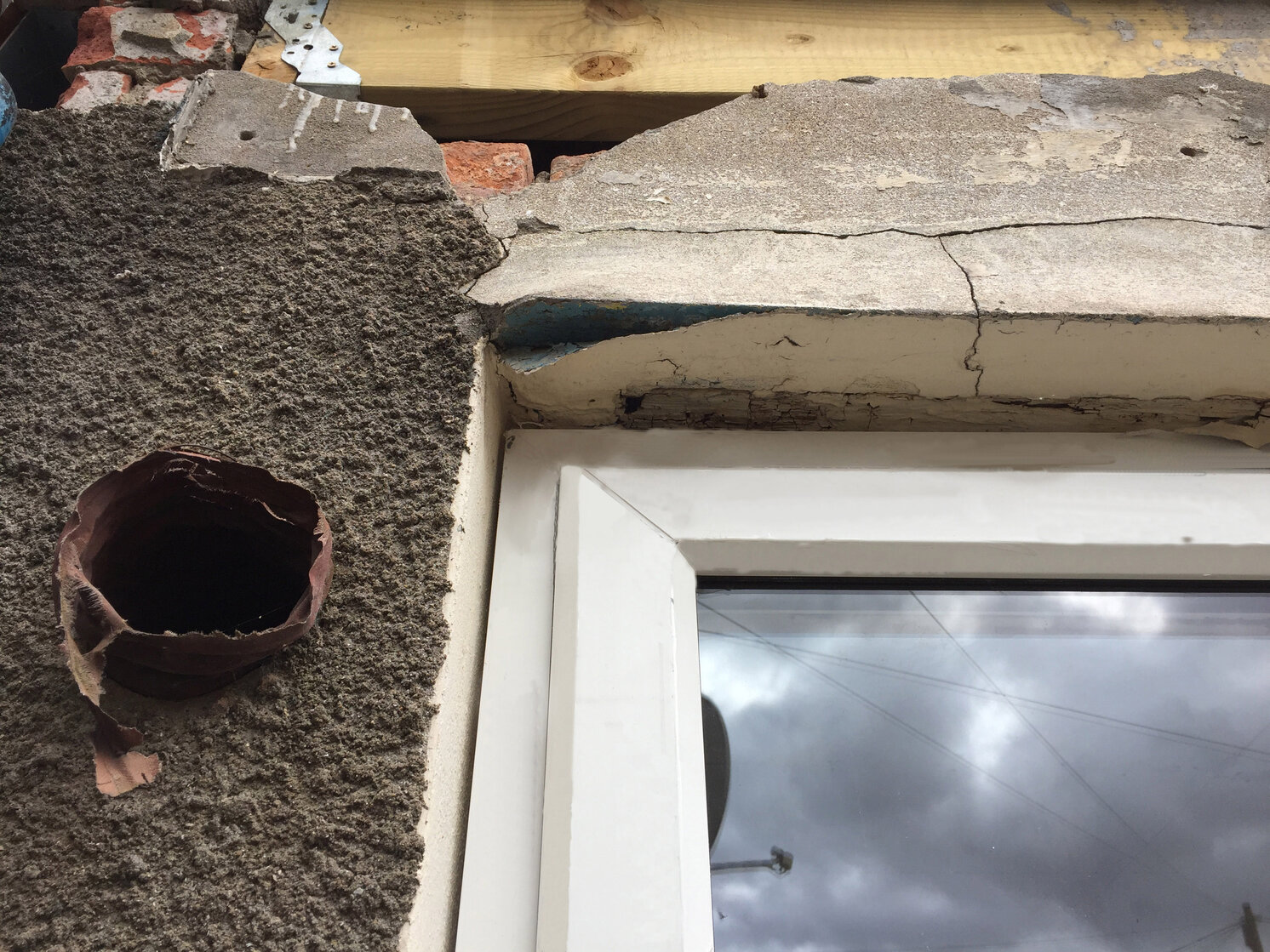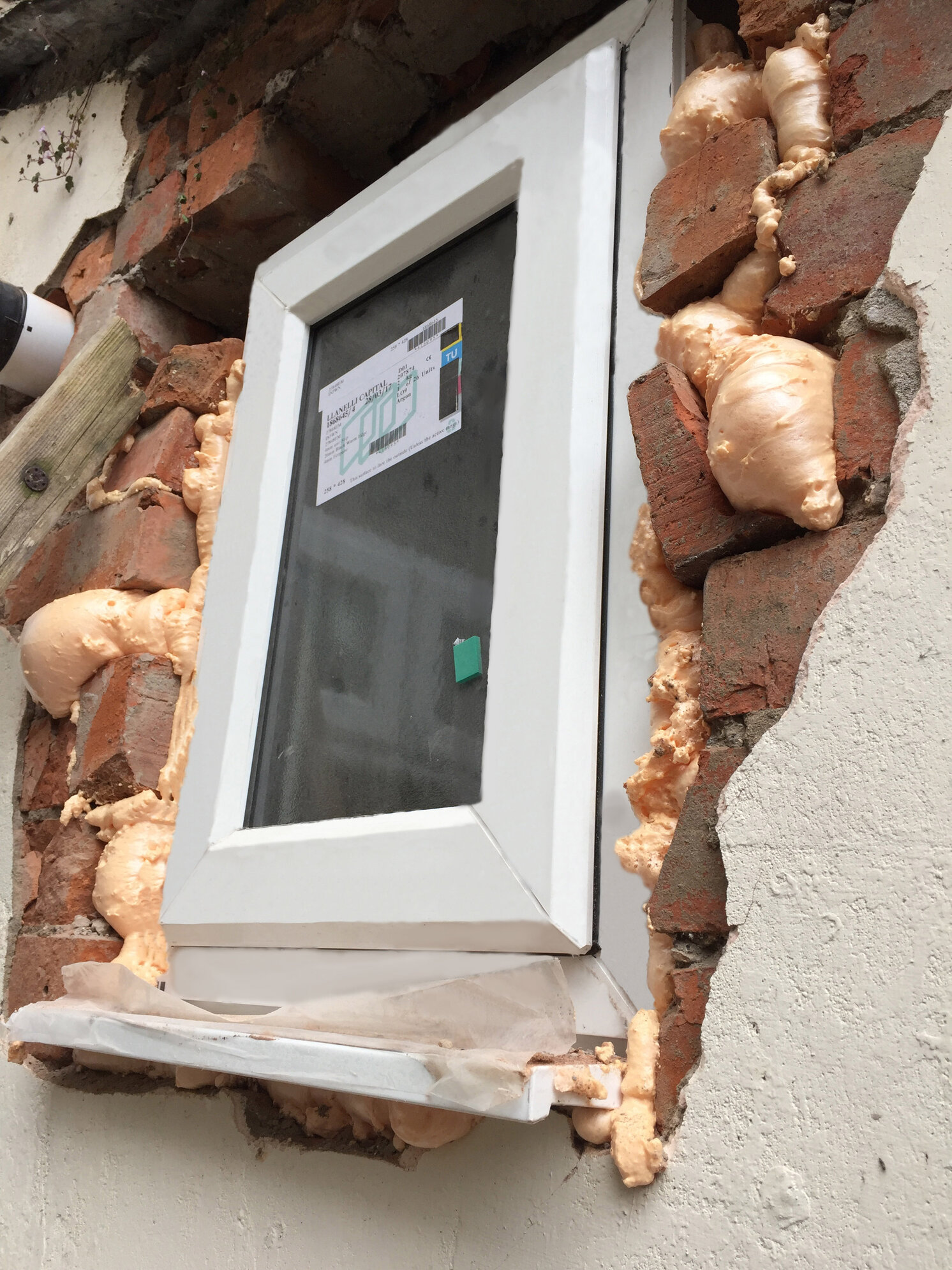Window sealing. Everything you need to know
Windows are often one of the most expensive and highly performing elements in airtight & weather proof building envelope. But the connection to the wall is often overlooked. This is how we think it can be done better.
How do you join the window to its surround? Windows bridge the internal air & vapour control layer (AVCL) and the external weather line. It’s essential that neither of these layers are broken, so they must be carefully jointed into the window frame with window sealing.
If the sealing isn’t perfect it leads to hosts of problems – draughts, condensation, discomfort, mould etc.
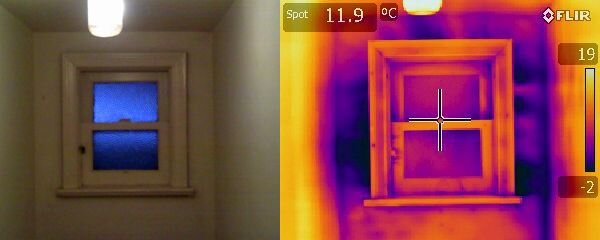
Thermographic image of a leaky window (Lloyd Alter)
SIGA spent a lot of time on this. You can make it quicker, easier and more robust than what you usually do.
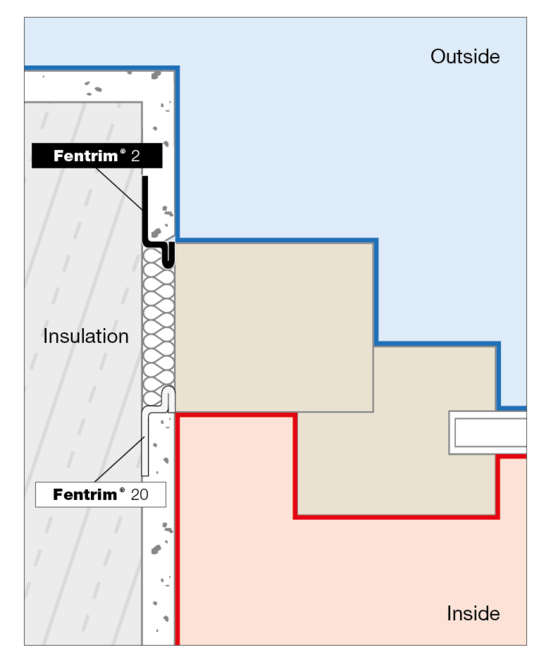
On the inside, the red line is the AVCL. Blue is the external weather line. The white strip is internal Fentrim® 20, with an Sd value* of 20. The black is external Fentrim® 2, with an Sd of, you guessed it, 2. *Sd describes how vapour-resistant a layer is.; a higher number means its harder for moisture to diffuse through.
How to dress a window: the options
EPDM Skirt
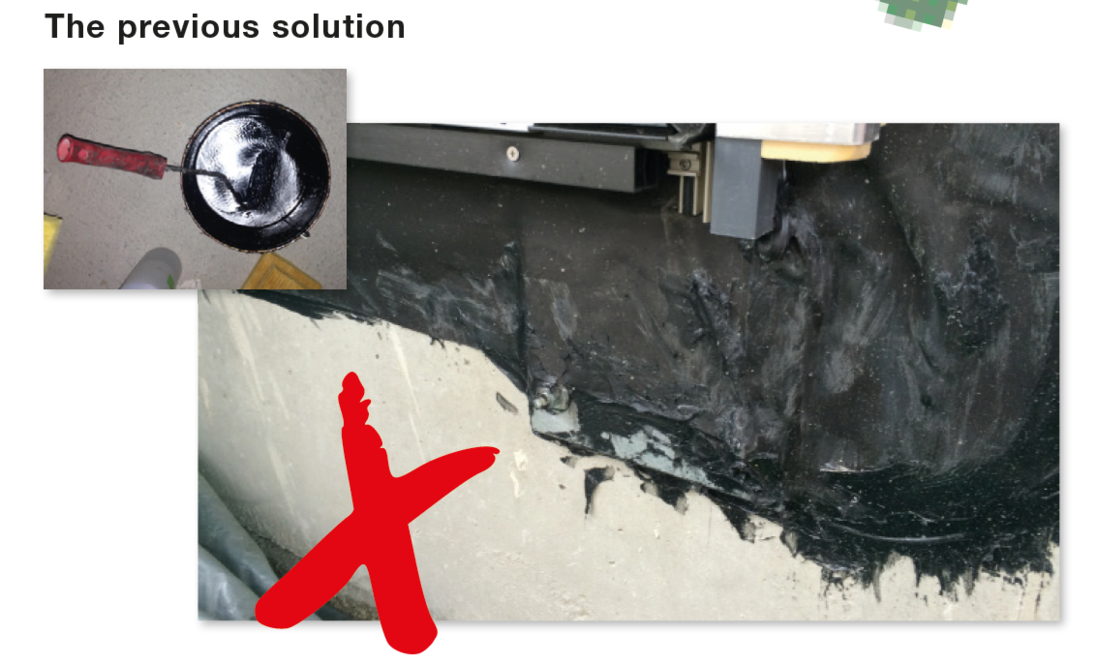
Commonly a semi-flexible sheet of EPDM is used as a ‘skirt’; glued to the surrounding wall. The process is long and messy; prime surface, wait, apply glue in an even manner, wait, apply the EPDM with just the right amount of pressure. The glue comes in ‘sausage’ packs that are hard to use and cannot be stored once opened. Hence lots of wastage of glue and mess on site.
In an office, if we need to stick things together, we don’t use plastic sheet, shears, and a pot of glue, that would be madness. We use sticky tape of course.
This is where Fentrim® comes in. Fentrim® will stick directly, without primer, on concrete, block, brick timber, etc. It’s a pre-folded adhesive tape, so application is a simple one-part process that is easy to do well; its low on mess & wastage.
The window frame/reveal is one of the coldest spots in the room so it is where condensation & mould growth are likely to form first. EPDM is impermeable, whereas Fentrim® has a low sd value to manage this.
Silicone Mastic
Good quality silicone mastic can be the right solution for air sealing- provided the gap is less than 15mm wide, which isn’t often the case for window install. A silicone bead is a very narrow course of material, so achieving consistent bonding can be difficult. Silicone is not especially elastic so it can fail during the first few years as the building settles.
Silicone mastic
Expanding Foam

Foam - a solution?
“Good old” squirty foam is applied from a can or applicator. This is the other extreme to silicone: there’s no problem here in filling large gaps, but it’s difficult to control and it sticks like the proverbial to everything it touches. So it’s very messy during the build and is troublesome at the end-of-life stage, too.
Expanding foam is brittle – it can snap during building settlement. Poor quality foams will degrade and shrink over time. It weathers rapidly. In short; its not “good old” at all.
For these reasons, if it is used at all, expanding foam should only be used as a gap-filling insulation around the frame. A dedicated tape or membrane should be used for the AVCL.
Expanding foam tape; Window tape; Flashing Tape
To make the seal these tapes tend to rely on a solvent-impregnated expanding foam layer that hardens on exposure to air. So, as we found with the EPDM glue, the usability varies with weather conditions. Each tape spans a certain range of gap. So when the gap is irregular, it can mean that you need two different tapes for one window. This can mean that wasteage is high, especially as once a pack has been opened it must be completely used, or skipped.

Fentrim®, like all SIGA tapes, works in the cold the heat, -10 / +40C. Hopefully you aren’t working beyond these conditions. The glue is solvent-free & resin-free; so there’s no toxins & no COSHH storage headaches. This also means that it ages very well; its re-placeable during application and permanent thereafter.
Other tapes

Duct/Gaffer/Cloth Tape
Hopefully you’re not using gaffer tape or duct tape on your AVCL? Although they may be sticky off the roll, these do not age well; the solvent based adhesive will degrade to a powder rapidly.
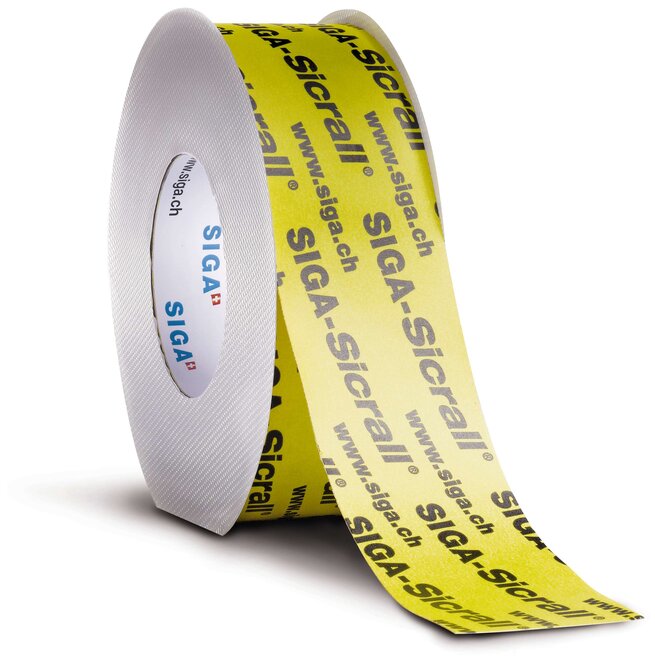
SIGA Sicrall 60 is a highly adhesive tape for sealing
Maybe you have a crate-load of vapour membrane tape, by SIGA or by others, which needs using up? This tape might be excellent for taping membrane to membrane, but at 50-60mm wide it’s not designed for the specifics of the window application. Fentrim® is upto 300mm wide. If you wish, SIGA can produce it even to upto 1500mm. Often the tape needs to span the cavity, and bear onto rough brick or blockwork. So you need a tape that is very wide, and very sticky.
At up to 300mm wide, Fentrim® is to tapes what a full BBQ rack of ribs is to dining: it’s bigger, bolder and stickier than anything else out there.

We’ve got this taped, how to do it better
Installing Fentrim® is as easy as sealing an envelope.
If costed vs EPDM, Fentrim® may look more expensive, on paper. But once you factor in the un-costed wastage of adhesive, and the time and mess of install, we feel that Fentrim® will come out as a better job, for less. Ask us how.
Having tested their products for 50 years with artificial ageing, SIGA are confident to warranty all their products.
The detailing varies between projects, so there is no single correct answer. SIGA’s technical advisors can recommend the right product for your project.
Contact a technical advisorBertie Dixon
Bertie has practised building services engineering and sustainability consulting in the UK for 15 years. He is a certified PassivHaus planner. He is on a mission to help you deliver a high-quality building, one that does what it says on the tin.
